Feeling helpless?

Is feeling helpless becoming routine?
It's only natural that a pandemic and the terrible events we've witnessed become hope and energy vampires. We fight the good fight each day with clarity, compassion, community, and courage.
We may feel discouraged, exhausted, lonely, and a plethora of other very real emotions, but we can't allow ourselves to feel helpless.
What we think about almost always influences what we will and won't do next. If we allow ourselves to feel helpless, we run the risk of allowing our actions will follow suit.
Thankfully, the space between feelings and actions is also ripe with opportunity.
When hope is dwindling, we can double down on being helpful.
The power of focusing on being helpful isn't in doing more, but in being mindful that even in the face of extremely difficult circumstances, we continue to make a mark on the world.
You are today where your thoughts have brought you, and you will be tomorrow where your thoughts take you because your thoughts dr...
Replace Negative Loops with a Highlight Reel

In 2005, the National Science Foundation published an article that found the average person has about 12,000 to 60,000 thoughts per day, of which 80% are negative, and 95% were repetitive thoughts from the previous day.
Our minds too often focus on the negative, and even worse, create a playlist that loops daily.
Another study that same year (Leahy, Study of Cornell University), identified 85% of our worries never materialize and that 97% of our worries are baseless.
Not all negative thoughts are created equally. Being aware of danger can help us survive, but most negative thoughts only serve to create pessimism and useless drama.
Watch your thoughts; they become words. Watch your words; they become actions. Watch your actions; they become habit. Watch your habits; they become character. Watch your character; it becomes your destiny. — Lao Tzu
So how can we surface and nurture positive thoughts?
The highlight reel, an exceptionally powerful tool from David Nurse's book, Pivot ...
Swimming Pools and Headlights
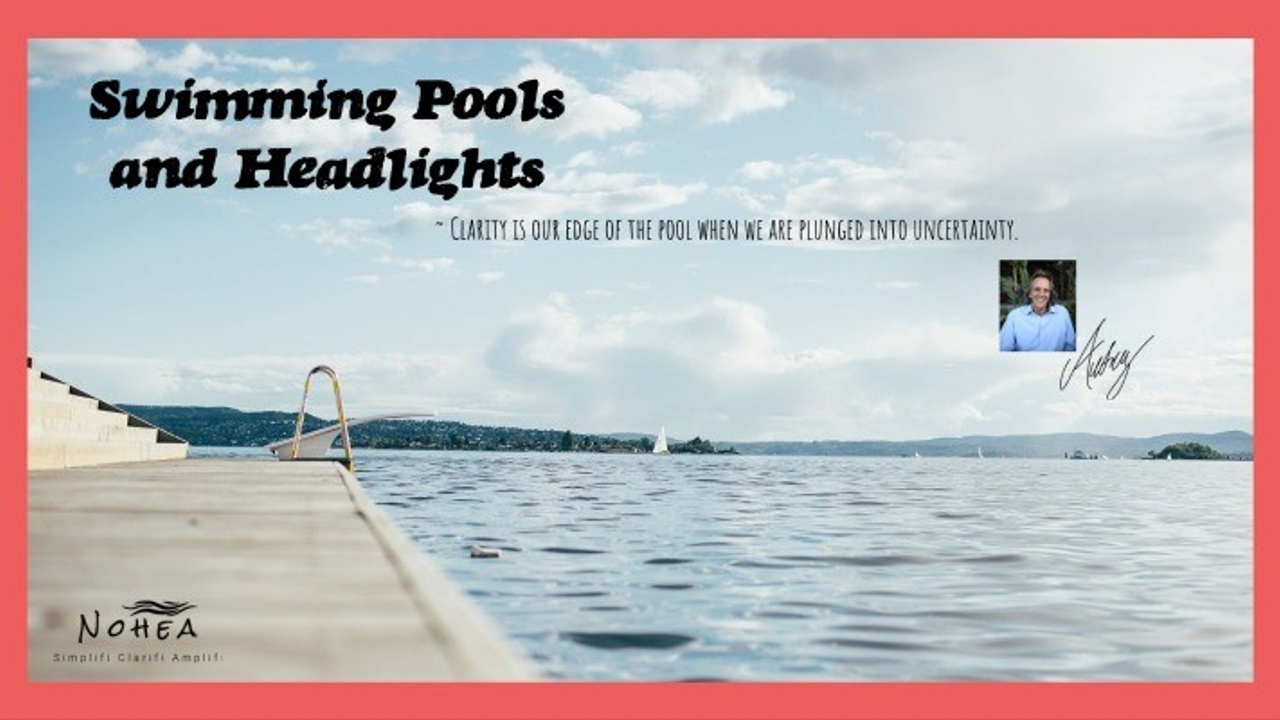
Do you remember the first time you jumped into the deep end of the pool?
How the exuberance that rushed through you was matched only by your need to grab onto the edge of the pool?
Clarity is our edge of the pool when we are plunged into uncertainty. It offers us the confidence to take a chance on something that feels precarious, knowing we have something secure to hang onto when fatigue and fear inevitably set in.
But, in challenging times, when clarity is scarce, that pool can feel like the middle of an ocean.
Every next move feels uncertain.
But is it?
The future can be akin to "driving at night. You never see further than your headlights, but you can make the whole trip that way." (E.L. Doctorow) We only get about 200 hundred yards of light, and often there is no signage to let us know what's around the bend.
Like the edges that allow us to make that first leap into the pool, we can use all available clarity to journey more confidently through challenging times.
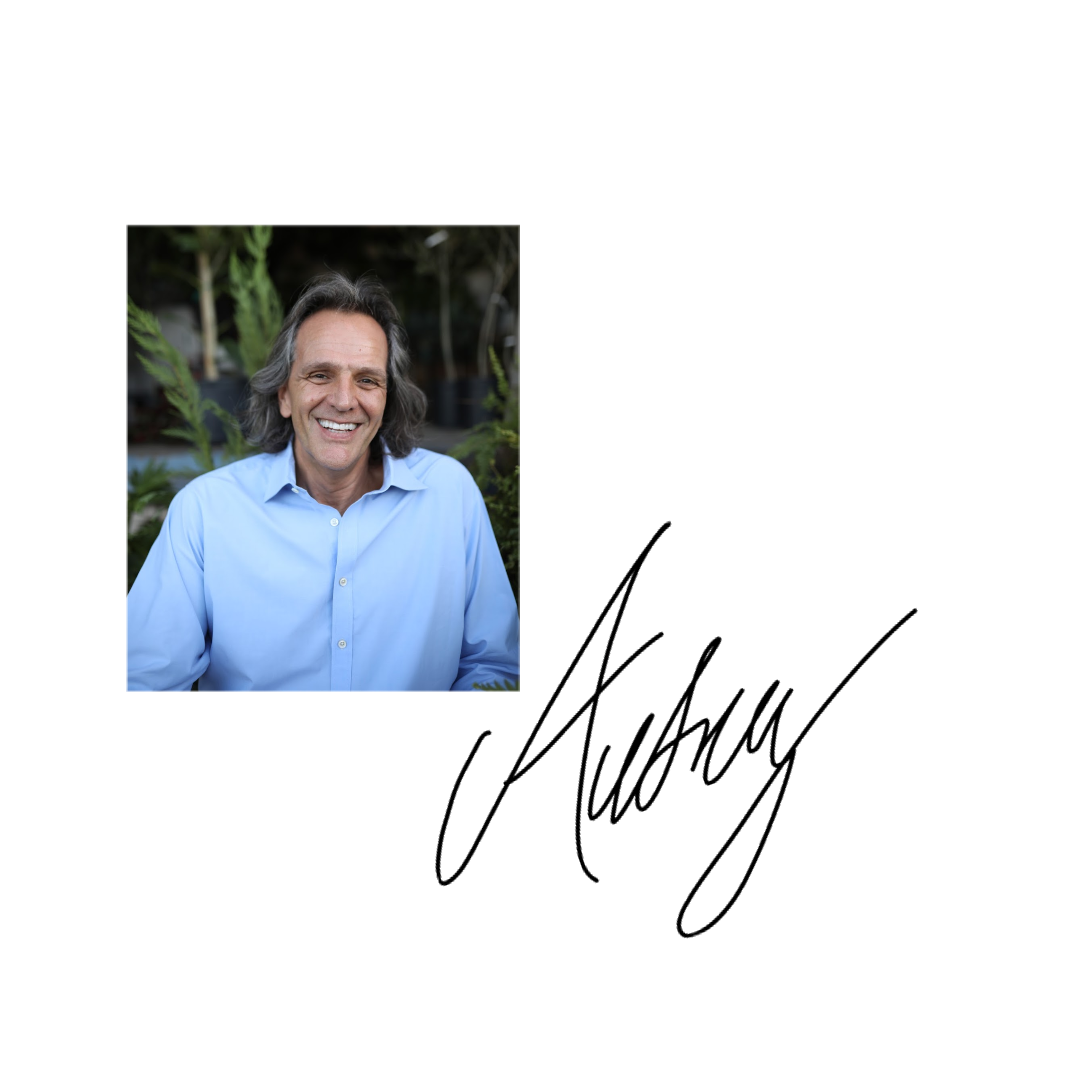
The means or the end?

No plan ever survives its collision with reality.
We often coach well-intentioned leaders who are serial planners. Inevitably when we try to drive home the point that someone actually needs to do the work, we will start with a smile and the phrase no plan ever survives a collision with reality.
But we’re not going to say this anymore.
Because for the serial planner, it's simply not true.
The inertia that plagues many school districts and schools is all too often poorly masked by lofty, beautifully crafted, and jargon-filled plans and mission statements that aren’t affected by reality.
Many well-intentioned plans lose track of the very problem that is being solved and become the end and not the means.
The very best plans are malleable and adjust to the needs of the students, teachers, and community. Plans should be active documents and if they are printed, they should be dog-eared and wear their fingerprints and coffee stains proudly.
Many years ago, a well-traveled priest was presenting...
Always On

Do you feel like there's a lot of stuff coming at you?
If so, you might be suffering from the always-on conundrum.
You know that feeling that something will come at you at any time or that awful persistent thought that you might be missing something?
It's hard to put edges on our work in the information age.
Just fifteen or twenty years ago, people could parcel off pieces of their lives. Not completely of course, but enough to have some peace of mind when spending time with family and friends.
Thus we have the conundrum.
If we try to compartmentalize our work and home, we probably make the noise worse, because of something called ironic process theory: The more we try to not think of something, the more that thing is cemented into our brains.
You may have read studies on this using a white bear or a pink elephant.
Give it a try.
Don't think about a pink elephant!
While one part of the brain is shutting out thoughts of the pink elephant, another part helpfully reminds you that...
50% Adulting
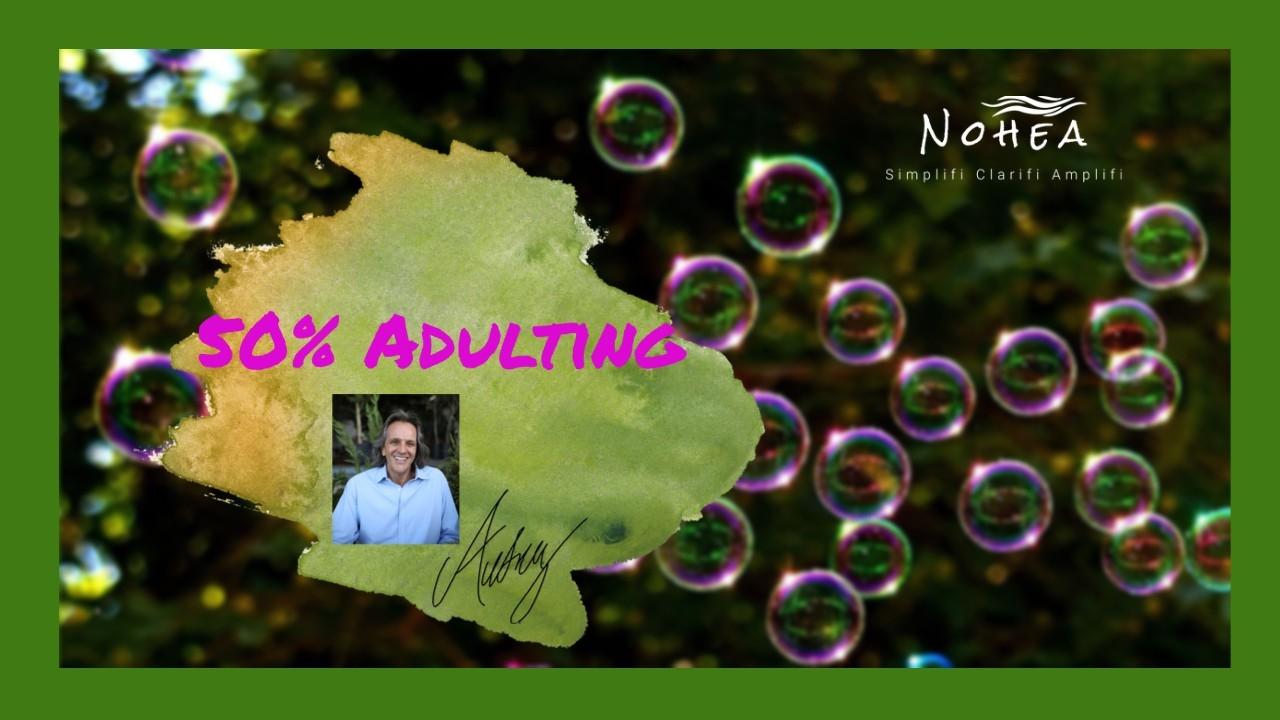
Imagine a toddler chasing bubbles. It's so easy to smile with every happy reach, right?
Wouldn't it be fantastic if we could embrace our childlike wonder and tirelessly chase the bubbles that pop up in our adult lives?
Well, yes ...
And, no.

Of course, not every bubble should be chased. Effective leaders understand that not everything is a binary choice, and seeking to be 50% childlike is often the right choice. They lead knowing a childlike tendency to play, laugh without worry, and live in the present is good for the soul and the healthy kind of infectious.
Yet, exceptional leaders are thoughtfully open to the bubbles that appear each day. They exercise restraint and rather than reach for every bubble, they enjoy watching others go before them and examining the source in hopes of becoming a bubble maker.
Mindful leaders embrace their childlike wonder, chasing the bubbles meant for them while discerning how best they grow that same excitement in those they serve.

Want...
The Best Research is Me-Search
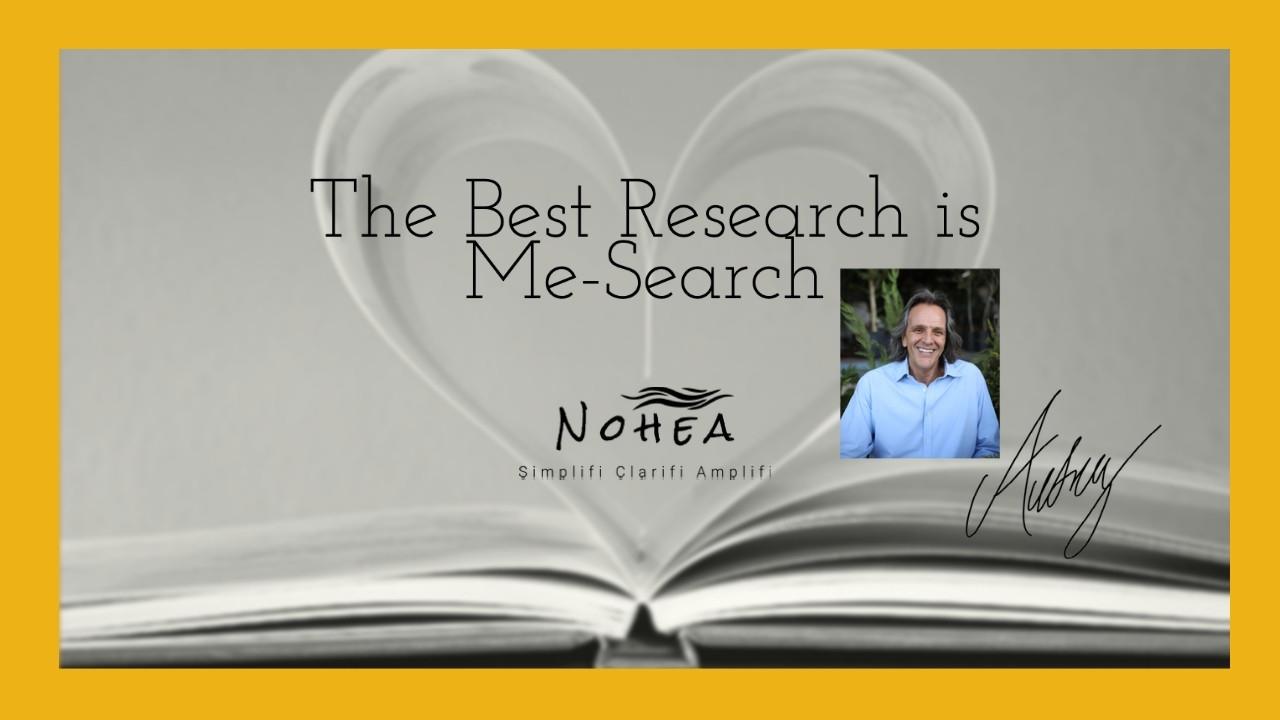
I know in my heart there's got to be a better way!
Do you too often land on this thought while lying awake in bed at 2 am, after a day of long and unproductive meetings, or staring at a seemingly pulsating inbox with far too many reminders of things to do?
This is the kind of cardiac assessment we all do without a doctor and, much like internal medical scopes, this self-assessment can be painful yet lead to brighter days.
Much of our most impactful creativity begins with a breaking point, digging into a problem that’s eating at us, and finding a solution.

We don’t really do our best work when we know the answers, but instead when we need the answers.
These same axioms apply to the problems we encounter in our organizations.
Most great answers, pathways, and systems begin with a healthy dose of cognitive dissonance and an even healthier supply of humility. "Leaders are not discovered in the limelight; (they) gain respect on difficult terrain, after taking a few blows and being s...
Are You a Carrot, an Egg, or a Coffee Bean?

Isn't it amazing that we can go years without hearing someone's name and then that person shows up two or three times in a few days?
This same phenomenon can also happen with an impactful quote or story.
This parable that first landed upon me almost two decades ago, has shown up three times in the past month. The original author is unknown, and perhaps this is how it should be ... the first to tell an impactful story is certainly a coffee bean.
A young woman went to her grandmother and told her about how things were so very hard for her. She did not know how she was going to make it and was ready to give up. She was tired of struggling. It seemed that whenever one problem was solved, a new one surfaced to take its place.
Her grandmother took her to the kitchen, where she filled three pots with water and placed each on a hot stove. The pots quickly came to boil. In the first she dropped carrots, in the second she placed eggs and in the third, she put ground coffee beans.
After abou...
Clarify
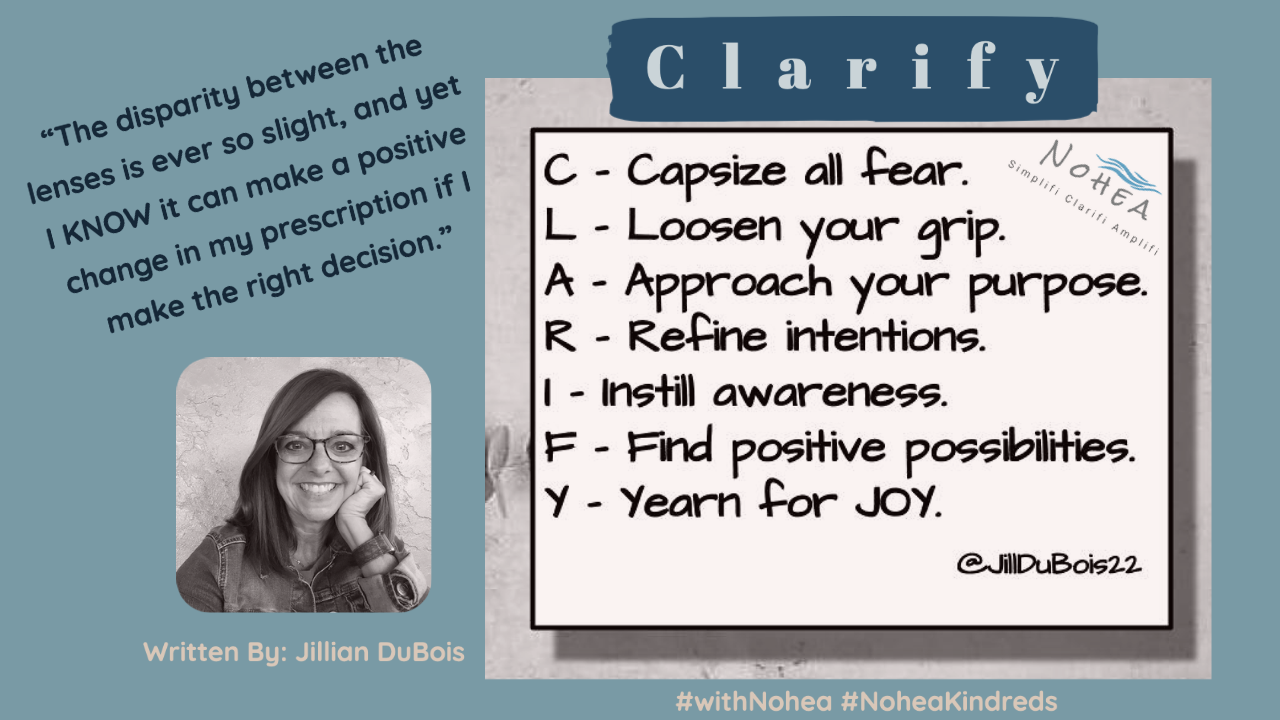
If you are familiar with yearly visits to the eye doctor, you’ve certainly heard, “Better HERE - one? Or HERE - two? One? Or Two?”
The optometrist questioned me at a rapid-fire pace and I was a bit disoriented in my reply.
I typically don’t mind any other part of an eye examination, but this one always perplexes me. The disparity between the lenses is ever so slight, and yet I KNOW it can make a positive change in my prescription if I make the right decision.
This prescription is my catalyst for better eyesight.
The CATALYST to clarity.
Wouldn’t it be nice if we were able to CLARIFY things with such little effort? If our next moves were just as simple as the binary choice between “One or Two?”, and the path was uncomplicated and undemanding?
How can we routinely CLARIFY our lives with skillful proficiency and confidence like we do when looking through those FIXED, adjusted lenses? Think for a moment about what exactly it would take to be an active participant and contributor to...
The Fence Needs To Go

Do you know any well-intentioned leaders who come in with new initiatives without first removing tired practices from your current reality? Perhaps you've had change happen to you and it feels like change for the sake of change?
Decluttering and change are necessary and there shouldn't be tension between the two. Decluttering is always the ideal lead domino. An effective leader invites change with, "what can we do right now to make anything on our things-to-do lists easier or unnecessary?"
Of course, sometimes, potentially impactful new ideas reveal themselves. While new shiny toys are always captivating, we need to first ask how this might make any other practice or policy easier or unnecessary, and this habit quite naturally leads back to a little decluttering.
However, some have an itchy trigger finger and quickly declutter just because things feel messy. Discomfort isn't reason enough to hand out erasers and red pens.
Effective leaders understand it's impossible to thoughtfully...

